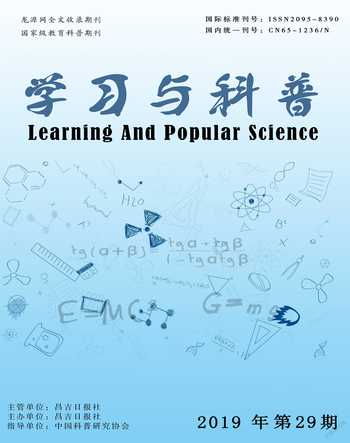A Comparative Study of Two Translations of Tess of the D’Urbervilles Based on Domestication vsForeignization
2019-09-10李元杰
李元杰
Abstract:Translation theory plays an important role in translating for translator. But for a long time, the choice of domestication and foreignization is a controversial topic in literature translation. This study first introduces and compares two translation strategies of translation in theory, and the study of Tess of the D’Urbervilles at home and abroad. Then in the translation strategies of domestication and foreignization, compare two Chinese translations of Mr.Zhang Guruo and Mr.Sun Fali of Tess of the D’Urbervilles and analyze their translation strategies and merits and drawbacks from aspects of proper noun, sentence, dialects in dialogue and style of writing. Finally, the study found, the two translations emphasize different translation strategies in language and culture. Overall, Mr.Zhang’s translation concentrates on domestication while Mr.Sun’s translation puts particular emphasis on foreignization.
Key words:Tess of the D’Urbervilles, literature translation, comparison, analysis
1 A comparative analysis of the two versions of Tess of the D'Urbervilles
1.1 Proper noun
Example 1:
Person: Zhang Sun
Joan 昭安 琼
Fred 傅赖 佛莱德
Places: Zhang Sun
Shaston 沙氏屯 沙斯頓
Sherton 谢屯 舍顿
Other: Zhang Sun
Battle Abby Roll 《纪功寺谱》 《巴托修道院文卷》
Lamb’s fry 羊杂碎 油炸羊肾
Mr.Sun uses the strategy of foreignization to remain the flavor of the original text while the contemporary readers tended to accept Mr.Sun’s translation. So in our modern translation, the translators should try their best to foreignize these cultural elements and adopts foreignizing translation in these names of people and places.
1.2 Sentence
Example 2
Original: “His present aspect, coupled with the lack of all human forms in the scene, explained the old-time heliolatries in a moment.”
Zhang: 他现在的面目既是那样, 再加上一片大地上,连一个人影儿都没有, 这就立刻叫我们明白了古代崇拜太阳的原故。
Sun: 太阳现在这样子跟其中全无人类形象的景物配合在一起,立即为古代的太阳崇拜辩明了理由。
Analysis: first of all, from the form, we can find Mr.Zhang’s sentences are fond of short sentences, the subject is unknown, which is Chinese writing style that subject in every sentence may not essential. But for Mr.Sun’s translation, the form of punctuation is exactly the same as original text, he’s purpose is to minimize the loss of original text’s form. Compare the two translations of "the lack of all human forms in the scene". For Mr.Zhang, “coupled with” is translated into “再加上” , however, for making a better understanding, he add a sentence “一片大地上” which is not existed in original text . For Mr.Sun, “跟其中全无人类形象的景物配合在一起”, conversely, he did not translate the original sentence into conventional Chinese sentence. Instead, He rigorously translate the original text word by word, add or lose nothing, which is the typical foreignization method.
1.3 Dialects in dialogues
Example 3
Original: “Mrs.D’Urbervilles was not the first mother compelled to love her offspring resentfully, and to be bitterly fond.”
Zhang: “天下当母亲的,迫于无奈,气儿子又疼儿子,恨儿子又爱儿子的,可就多着呢,德伯太太并不是头一个。”
Sun: “杜伯菲尔德太太并非是头一个怀着怨恨爱自己的后代,而且爱得很苦很深的妇女。”
Analysis: In this example, the original text seems a little plain. But how to translate “compelled to love her offspring resentfully and to be bitterly fond.”. It’s a little difficult for the translator to express the flavor of the source language. Zhang is a very experienced translator. He tried his best to express angry, hatred and love of Mrs D’Urbervilles. His translation is very fluent and natural. But in Sun’s version, he omits “compelled to”, “愛得很苦很深” is not very suitable to this place. So in this example, Zhang’s domesticating method is better.
4 Conclusion
The study of the two versions provides us a reference for literature translation in the future. Meanwhile,I found that, Mr.Zhang and Mr.Sun, as distinguished experts of literature translation, their translations can not be flawless. So I think when we are translating a literature later, it’s impossible that our work satisfy readers from all walks of life. But the function of translation is to bring a exotic culture into another. If only we can achieve this goal, the process is not limited. To sum up, as two primary translation strategies, domestication and foreignization have their unique merits and drawbacks. So translating literature works should never abandon or accept one of them purely but take the essence and discard the dregs of two translation strategies, combine both of them with translator’s understanding but within the frame of writer’s original meaning.
